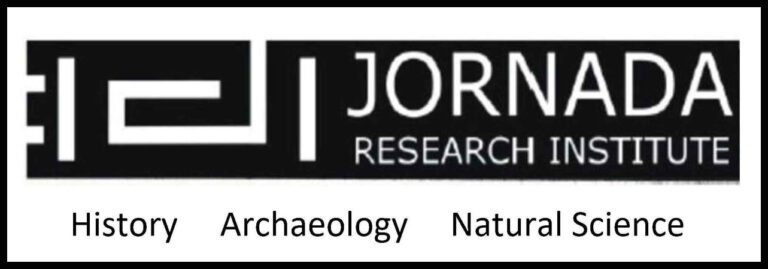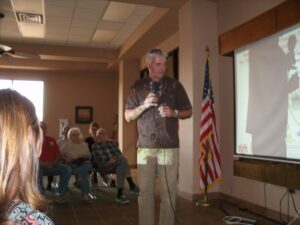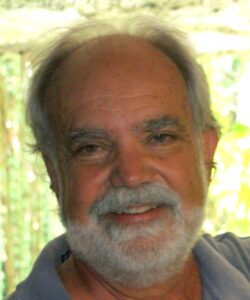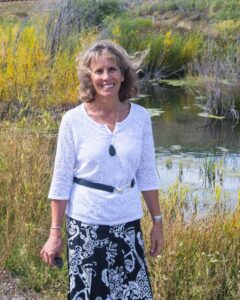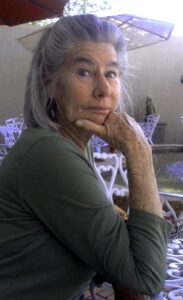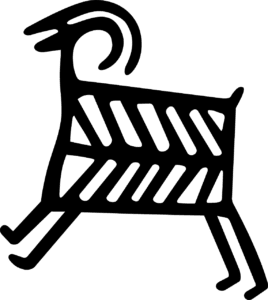Board of Directors
President – David Greenwald
Vice President- Alex Kurota
Secretary – Gerry Raymond
Treasurer – Nancy Hewitt
Board Member – Jeffery Hanson
Board Member – John Wheeler
Board Member – Samantha Krause
Board Member – Kathy Roler Durand
Board Member – Linda Schalk
Research Associates
David Greenwald
Jeffery R. Hanson, Ph.D.
David W. Love, Ph.D. (Emeritus)
Joan E. Price, M.F.A.
Deni Seymour, Ph.D.
Alexander Kurota, M.A.
Margaret Berrier
James A. Neely, Ph.D
(cont.)
Lisa Sparks, MA
Samantha Krause, Ph.D
Kathy Roller Durand, Ph.D
Myles Miller, MA
Mary Brown, MA
Jon Sandor, Ph.d
Maryann Wasiolek, MS
John Groh, MFA
David Rachal, Ph.D
Thatcher Seltzer-Rogers, Ph.D
Profiles: Board of Directors
David Greenwald – President
David Greenwald has accumulated over 50 years of archaeological experience, including academic research, cultural resource management, and independent research. He began his career as a Southwestern archaeologist in 1971, focusing on the archaeology of northern Sonora, Mexico, and joining the Arizona State University Office of Cultural Resource Management program in 1976. He developed a strong background in Hohokam archaeology while at Arizona State University and later with the Museum of Northern Arizona. He expanded his research interests to include portions of the Colorado Plateau and the upper Little Colorado River valley of eastern Arizona. In 1979, Mr. Greenwald joined the Dolores Archaeological Program for the University of Colorado, broadening his interests in Basketmaker III and Pueblo I site structure and group organization. In 1984, he returned to the Museum of Northern Arizona, focusing again on Hohokam settlement and was instrumental in defining Late Classic and Post-Classic period settlement patterns and organizational structure. He continued his interests in Hohokam and Ancestral Puebloan studies from 1989 through 1997 with investigations of sites at the Phoenix Sky Harbor Airport and on several projects in the upper Little Colorado River valley.
Since 2011, Mr. Greenwald has served as President and Founder of Jornada Research Institute, focusing his research interests on the settlement history of the northern Chihuahuan Desert. Here, he has gathered researchers who share his vision of advancing research among the various cultural and natural resources that occur within this vast region, and developing opportunities for public involvement and education. Mr. Greenwald also serves as a board member of the Archaeological Society of New Mexico and has been a recent recipient of the Bice Award for volunteer services in archaeology.
Alex Kurota, M.A. – Vice President
Alexander Kurota has over 25 years of experience in Southwestern archaeology. In 1998 Alex obtained his MA in Anthropology (Archaeology) at Wichita State University after which he worked for various archaeology contract companies in Arizona and New Mexico. His research publications have focused primarily on the Mogollon, Jornada Mogollon and Ancestral Pueblo culture areas and understanding the use and exchange of prehistoric pottery. In the past eight years, Mr. Kurota has directed a series of field projects on White Sands Missile Range and White Sands National Monument. He works as a Senior Archeologist and Ceramic Analyst at the Office of Contract Archeology, University of New Mexico in Albuquerque.
Gerry Raymond- Secretary
Gerry Raymond is an archaeologist and architectural historian, with over 25 years of experience in southwestern archaeology and cultural resource management. He holds Master of Arts degrees from the University of Texas at San Antonio and the University of New Mexico with specific knowledge of the documentation process of buildings, structures and cultural landscapes. Recently, Gerry oversaw the production of the National Register of Historic Places nomination of the Tularosa Acequia System funded by a grant from the New Mexico Historic Preservation Division.
Nancy Hewitt – Treasurer
Ms. Hewitt currently lives in Utah. She has been an accountant for 23 years and has counted beans for a variety of businesses including a solar panel company, a business-writing firm, landscapers, a furniture maker, an interior decorator, a water softener company, advertising agencies, and a shaman. She also does accounting for several non-profit organizations including the Park City Summit County Arts Council where she served as treasurer.
Ms. Hewitt wasn’t always a dull accountant. Her first career was as an archaeologist, and she conducted digs in Utah, Colorado, and in the South Pacific on the Island of Upolu in Samoa. She was a locality supervisor for the Dolores Archaeological Project and taught field school for the University of Utah. Nancy holds a Masters Degree in Anthropology from the University of Utah. She has many publications to her credit, and one in particular about Prehistoric Rock Art in the Colorado Plateau is often cited.
After 10 years digging in the dirt, she moved on to technical writing. Initially she wrote and edited archaeological material, then moved to the engineering field where she was employed as a writer at the Center for Energy Studies at the University of Texas. She later worked as a proposal writer/consultant for a Utah consulting company (Shipley Associates) that worked with Fortune 500 companies around the world. In that capacity, she wrote promotional materials as well and earned an Employee Benefits Communication Award for a series of brochures she created for American Stores Company. As a proposal-writing consultant, Ms. Hewitt had a 95% win rate for her clients who included AT&T, Bell Boeing, McDonnell Douglas, and Fluor Daniels.

Profiles: Research Associates
Joan E. Price, MFA has a Bachelor’s Degree in Fine Arts from the Manchester College of Art, England, and Doane College, Crete, Nebraska, and a Master’s Degree in Fine Arts from the University of California at Santa Barbara. Joan brings an exceptional background in writing and public education to JRI. She is a freelance writer/photographer and educator with a strong focus on Native American cultural issues. She was born in Denver, Colorado, grew up in Colorado Springs and moved to Tularosa from Santa Fe, New Mexico, in 1994. In 1999, with Kay Sutherland, Ph. D., a cultural anthropologist from Austin, and El Paso, Texas, Ms. Price founded and co-directed the Rainhouse, a non-profit foundation to facilitate cultural exchange between Mesoamerican and North American native groups. They conducted a Round Table Conference (1999) between scientists and Native Americans and An Ethnographic Assessment of Indigenous Mexican and Mayan Cultural Affiliation to Hueco Tanks State Historic Park (2001) for Texas Parks and Wildlife.
In 2011, she published Material Traces of the Rainhouse: Anthropology and Archeology Investigations of a Native American Landscape in the Tularosa Basin with Lulu.com, the first overview of the findings in the Tularosa Basin written for the layperson.
In 1983, she was Guest Curator at the Institute of American Indian Arts in Santa Fe, NM of an interpretive art exhibit comparing native cosmologies and findings in modern climate models titled Sacred Mountains: World Heritage. Native American faculty advisors to this project were Dr. Dave Warren, Dr. Greg Cajete and Rina Swentzell, Ph.D. Ms. Price has produced documentaries for several Native American groups on rebuilding ancestral heritage including the Hopi Prayer Run to Mexico (2006), Where Culture Is, There Is Harmony an employee training program for the National Park Service Office of Indian Affairs, and When Cultures Meet: Remembering San Gabriel del Yunge Oweenge Symposium.
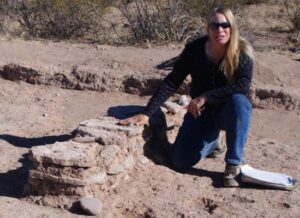 Dr. Deni Seymour, Ph.D., is a leading regional authority on protohistoric and historic Native American and Spanish colonial archaeology and ethnohistory. For over 30 years she has studied the ancestral Apache, Sobaipuri-O’odham, and lesser-known mobile groups (Jano, Jocome, Manso, Suma, and Jumano) who were present at the same time. She has excavated two Spanish-period presidios and several indigenous sites of the period, works with indigenous groups in reconnecting with their heritage, and has rewritten the history of the pre-Spanish and colonial period southern Southwest. Dr. Seymour has published extensively on these groups and this period, with more than 75 publications in referreed journals, edited volumes, and popular venues, and has served as guest editor for journals. She has also authored three books: Where the Earth and Sky are Sewn Together: Sobaípuri-O’odham Contexts of Contact and Colonialism; From the Land of Ever Winter to the American Southwest: Athapaskan Migrations, Mobility, and Ethnogenesis; and A Fateful Day in 1698: Archaeological Insights into the Remarkable Sobaipuri-O’odham Victory Over the Apache and their Allies.
Dr. Deni Seymour, Ph.D., is a leading regional authority on protohistoric and historic Native American and Spanish colonial archaeology and ethnohistory. For over 30 years she has studied the ancestral Apache, Sobaipuri-O’odham, and lesser-known mobile groups (Jano, Jocome, Manso, Suma, and Jumano) who were present at the same time. She has excavated two Spanish-period presidios and several indigenous sites of the period, works with indigenous groups in reconnecting with their heritage, and has rewritten the history of the pre-Spanish and colonial period southern Southwest. Dr. Seymour has published extensively on these groups and this period, with more than 75 publications in referreed journals, edited volumes, and popular venues, and has served as guest editor for journals. She has also authored three books: Where the Earth and Sky are Sewn Together: Sobaípuri-O’odham Contexts of Contact and Colonialism; From the Land of Ever Winter to the American Southwest: Athapaskan Migrations, Mobility, and Ethnogenesis; and A Fateful Day in 1698: Archaeological Insights into the Remarkable Sobaipuri-O’odham Victory Over the Apache and their Allies.
Dr. Seymour received her doctorate and master’s degrees in Anthropology from the University of Arizona in 1990 and her Bachelor’s degrees with honors in both Anthropology and Environmental Studies from the University of California, Santa Cruz in 1980. She has taught, was employed by a number of state and federal agencies, and has worked for a number of cultural resource management firms, including one she founded and oversaw. Now she is a full-time research archaeologist affiliated with two academic institutions and the nonprofit research group Jornada Research Institute and she serves on the boards of two non-profits.
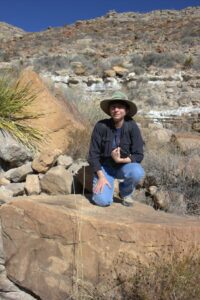
Margaret Berrier is a highly experienced rock art researcher who has made significant contributions to the study of rock art in Texas, New Mexico, Algeria and elsewhere. Among her numerous achievements, she has been honored in her work by receiving the Bice Award for archaeological achievement, and the Castleton Award. She has an extensive publication record, and has given well received papers at conferences, including the Utah Rock Art Research Association meeting and the Jornada Mogollon Conference. Margaret was recently elected to the American Rock Art Research Associations (ARARA) board of directors. Here are the links to Margaret’s Academia.edu website: https://independent.academia.edu/MargaretBerrier Margaret has also designed a wonderful Three Rivers Petroglyph coloring book. Here is the link: https://www.academia.edu/43988672/Three_Rivers_Coloring_Book
 James A. Neely Ph.D. (1974, University of Arizona) is Professor Emeritus of Anthropology and Archaeology at the University of Texas at Austin and a Research Associate of the Arizona State Museum, University of Arizona. His research focuses on prehistoric and early historic agricultural strategies, agricultural intensification, water technology, and water management in the American Southwest, Mesoamerica, and the Middle East.
James A. Neely Ph.D. (1974, University of Arizona) is Professor Emeritus of Anthropology and Archaeology at the University of Texas at Austin and a Research Associate of the Arizona State Museum, University of Arizona. His research focuses on prehistoric and early historic agricultural strategies, agricultural intensification, water technology, and water management in the American Southwest, Mesoamerica, and the Middle East.
 Dr. David Rachal, Ph.D., has 19 years of professional experience in geoscience research, teaching, and consulting in the Chihuahuan Desert. He has been involved in all phases of archaeological investigations including survey, testing and evaluation, and data recovery projects throughout southern New Mexico and west Texas. He has directed paleoclimate reconstructions and photogrammetry projects for both paleontological and archaeological studies. Dr. Rachal has also conducted high resolution first order soil surveys, digital soil mapping projects, soil erosion projects, and environmental assessments for ecologists and land managers on federal military installations in New Mexico. Dr. Dave has always been fascinated by how large-scale geologic processes can create unique landscapes. He has dedicated his life to exploring as many of these landscapes as he can and has visited over 33 countries over the last decade studying localities where geology and ancient civilizations intersect. His research interests include arid soil geomorphology, modern and paleo-eolian systems, geoarchaeology, Quaternary environments, photogrammetry, and human-megafauna trackway interactions. The majority of his research is conducted in the Tularosa Basin. He is collecting OSL samples from a basin floor sand sheet on Fort Bliss, New Mexico.
Dr. David Rachal, Ph.D., has 19 years of professional experience in geoscience research, teaching, and consulting in the Chihuahuan Desert. He has been involved in all phases of archaeological investigations including survey, testing and evaluation, and data recovery projects throughout southern New Mexico and west Texas. He has directed paleoclimate reconstructions and photogrammetry projects for both paleontological and archaeological studies. Dr. Rachal has also conducted high resolution first order soil surveys, digital soil mapping projects, soil erosion projects, and environmental assessments for ecologists and land managers on federal military installations in New Mexico. Dr. Dave has always been fascinated by how large-scale geologic processes can create unique landscapes. He has dedicated his life to exploring as many of these landscapes as he can and has visited over 33 countries over the last decade studying localities where geology and ancient civilizations intersect. His research interests include arid soil geomorphology, modern and paleo-eolian systems, geoarchaeology, Quaternary environments, photogrammetry, and human-megafauna trackway interactions. The majority of his research is conducted in the Tularosa Basin. He is collecting OSL samples from a basin floor sand sheet on Fort Bliss, New Mexico.
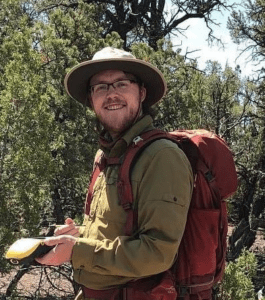 Thatcher Seltzer-Rogers, Ph.D., joined Jornada Research Institute as a Research Associate in 2020. Thatcher received his M.S. in 2019 from the University of New Mexico and has a Ph.D at UNM in Anthropology with an emphasis in Archaeology and a minor in Statistics. In 2023 he has also served as an archaeologist and ceramic analyst at the Office of Contract Archeology at UNM. and is currently at the Office of Archaeological Studies. His research focuses on social organization, interaction, and identity construction in cultural borderlands and peripheries in the southern American Southwest and in northwest Mexico. He has a strong background in the archaeology of northern Mexico and of areas along the United States-Mexico International Border, including the Tularosa Basin and surrounding areas.
Thatcher Seltzer-Rogers, Ph.D., joined Jornada Research Institute as a Research Associate in 2020. Thatcher received his M.S. in 2019 from the University of New Mexico and has a Ph.D at UNM in Anthropology with an emphasis in Archaeology and a minor in Statistics. In 2023 he has also served as an archaeologist and ceramic analyst at the Office of Contract Archeology at UNM. and is currently at the Office of Archaeological Studies. His research focuses on social organization, interaction, and identity construction in cultural borderlands and peripheries in the southern American Southwest and in northwest Mexico. He has a strong background in the archaeology of northern Mexico and of areas along the United States-Mexico International Border, including the Tularosa Basin and surrounding areas.
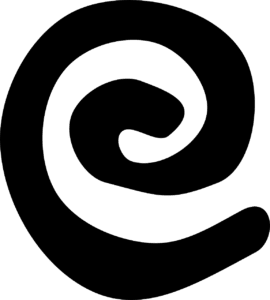
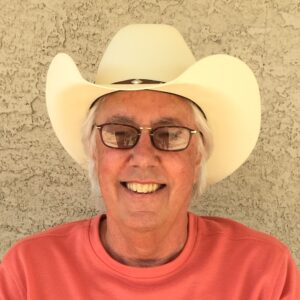 Dr. Jeffery Hanson, Ph.D., is a an archaeologist and cultural anthropologist whose research interests have included indigenous Great Plains ethnohistory and prehistory, prehistory of the Southwest, rock art, American culture, and epidemic disease. Dr. Hanson holds undergraduate and graduate degrees in anthropology from the University of Wisconsin-Stevens Point, Northern Illinois University and the University of Missouri-Columbia.
Dr. Jeffery Hanson, Ph.D., is a an archaeologist and cultural anthropologist whose research interests have included indigenous Great Plains ethnohistory and prehistory, prehistory of the Southwest, rock art, American culture, and epidemic disease. Dr. Hanson holds undergraduate and graduate degrees in anthropology from the University of Wisconsin-Stevens Point, Northern Illinois University and the University of Missouri-Columbia.
He has over twenty years of undergraduate and graduate teaching experience, and has published numerous articles in refereed and non-refereed journals. He has also served as an archaeologist for the Mescalero Apache Tribe, and with the federal government, and the private CRM sector. He has served as an archaeological expert for the investigation of heritage resources crimes. Currently, he teaches training classes on the National historic Preservation Act, and on archaeological looting and vandalism, and is conducting condition assessment of petroglyphs.
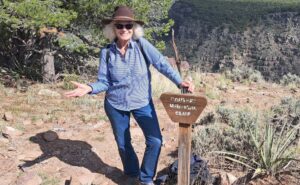 Maryann Wasiolek, MS, is a hydrogeologist who has worked in the Southwest for over 40 years. She grew up in the Appalachian Mountains of south-central Pennsylvania, and after obtaining a BA in Geology and English from Bucknell University, she high-tailed it out west. After a brief academic hiatus, she obtained an MS in Hydrology from New Mexico Institute of Mining and Mineral Resources in Socorro in 1981. Her areas of particular expertise are in coordination of technical work for litigation, analysis of legal documents such as compacts, degrees, and settlements from a geohydrologic angle, geohydrologic and consumptive use issues, inter-state water issues, water rights, analysis of hydrogeologic systems, ground water modeling, and well drilling and aquifer testing. She has testified as an expert witness in hydrology and geohydrology in a number of legal forums. Sadly, she is still gainfully employed as President of Hydroscience Associates, Inc.
Maryann Wasiolek, MS, is a hydrogeologist who has worked in the Southwest for over 40 years. She grew up in the Appalachian Mountains of south-central Pennsylvania, and after obtaining a BA in Geology and English from Bucknell University, she high-tailed it out west. After a brief academic hiatus, she obtained an MS in Hydrology from New Mexico Institute of Mining and Mineral Resources in Socorro in 1981. Her areas of particular expertise are in coordination of technical work for litigation, analysis of legal documents such as compacts, degrees, and settlements from a geohydrologic angle, geohydrologic and consumptive use issues, inter-state water issues, water rights, analysis of hydrogeologic systems, ground water modeling, and well drilling and aquifer testing. She has testified as an expert witness in hydrology and geohydrology in a number of legal forums. Sadly, she is still gainfully employed as President of Hydroscience Associates, Inc.
Ms. Wasiolek has been involved in investigating the hydraulic and engineering aspects of prehistoric farming features. She has made a number of presentations to archaeologists regarding prehistoric water control and diversion structures. She has been interested in rock art since she moved to the Southwest in 1976, and has been compiling photographs of prehistoric rock art that appear to represent fields and water control.
 Mary Brown, MA, is a Fine Art Professional and Archaeologist located in Placitas, New Mexico. She earned a Fine Art degree in 2004, an Anthropology B.A. from North Carolina State University in 2013 (magna cum laude), and her Anthropology M.A. from New Mexico State University in 2019. She has been a professional artist for over 20 years and a CRM professional in New Mexico for over seven years, two of those spent as Cultural Resources Laboratory Manager. She is permitted for human burial excavation in New Mexico and has solid experience in excavation, cultural resource investigations, cultural resources laboratory management, curation, and Behavioral Communication Theory.
Mary Brown, MA, is a Fine Art Professional and Archaeologist located in Placitas, New Mexico. She earned a Fine Art degree in 2004, an Anthropology B.A. from North Carolina State University in 2013 (magna cum laude), and her Anthropology M.A. from New Mexico State University in 2019. She has been a professional artist for over 20 years and a CRM professional in New Mexico for over seven years, two of those spent as Cultural Resources Laboratory Manager. She is permitted for human burial excavation in New Mexico and has solid experience in excavation, cultural resource investigations, cultural resources laboratory management, curation, and Behavioral Communication Theory.
Mary was awarded The Bradley A. Blake Prize in Anthropology in 2019 for excellence in research for her thesis, Rock Art as Ritual Communicator: A Theoretical Evaluation. She has authored and co-authored publications on rock art and sites in the Mogollon and presented her research at annual conferences for the Society for American Archaeology, and biannual conferences for the Jornada Mogollon and Mogollon.
Her research focuses primarily on applying Behavioral Communication Theory to identify and explore ritual activity. In 2022, Mary launched a collaborative project that combines art and archaeology to address specific public outreach and education needs. She currently works as an Archaeologist for OCA and TRC, and as an Independent Researcher, Artist, and Archaeological Illustrator.
John Groh, MFA, has been an active member of Torrance County Archaelogical Society and Jornada Research Institute for several years, promoting speaker presentations, field trips for both groups, ongoing field studies, site stewardship, grant writing, research and publishing. He uses his background in art and graphics production to benefit both organizations through promotion of activities and publications and research. His energy has served to enrich the public, bridging interaction between avocationalists and professionals. John seems to have a tireless source of energy working with local agencies, such as the Cibola National Forest, other researchers, and the public. His continued research focus is on the archaeology of the Salinas region and adjacent areas, with special attention given to rock art/symbolism, archaeoastronomy, and paleoeconomy/subsistence strategies. His inquisitive nature drives him to study many facets of the Tompiro, Piro, Jornada Mogollon, and others that interacted and shaped the history of the Salinas Province, Tularosa Basin, and their neighboring areas. Mr. Groh recently received the Bice Award from the Archaeological Society of New Mexico for his intense dedicated service as a volunteer for various agencies, organizations and research groups.
 Dr. Kathy Roler Durand, Ph.D., is a native of Phoenix, Arizona, and holds Bachelor of Arts, Master of Arts, and Doctor of Philosophy degrees in Anthropology from Arizona State University. During graduate school she was awarded a National Science Foundation Graduate Research Fellowship from 1989-1992 and more recently has served as a Review Panelist for the NSF Graduate Research Fellowships. Dr. Durand began teaching at Eastern New Mexico University in January 1993, and retired in the summer of 2018. During her time at Eastern, she attained the rank of Professor of Anthropology, served as Department Chair of Anthropology and Applied Archaeology for 10 years, and was Assistant Dean of CLAS for two years. Dr. Durand received ENMU’s Presidential Award for Excellence in Teaching in 2007-2008 and the Presidential Award for Excellence in Research/Scholarly/Creative Activity in 2016-2017. Dr. Durand continues to work on research projects and has taught part-time during her retirement.
Dr. Kathy Roler Durand, Ph.D., is a native of Phoenix, Arizona, and holds Bachelor of Arts, Master of Arts, and Doctor of Philosophy degrees in Anthropology from Arizona State University. During graduate school she was awarded a National Science Foundation Graduate Research Fellowship from 1989-1992 and more recently has served as a Review Panelist for the NSF Graduate Research Fellowships. Dr. Durand began teaching at Eastern New Mexico University in January 1993, and retired in the summer of 2018. During her time at Eastern, she attained the rank of Professor of Anthropology, served as Department Chair of Anthropology and Applied Archaeology for 10 years, and was Assistant Dean of CLAS for two years. Dr. Durand received ENMU’s Presidential Award for Excellence in Teaching in 2007-2008 and the Presidential Award for Excellence in Research/Scholarly/Creative Activity in 2016-2017. Dr. Durand continues to work on research projects and has taught part-time during her retirement.
Within the field of anthropology, Dr. Durand specializes in the analysis of animal and human bones recovered from archaeological excavations. Her field work has ranged from Neolithic sites in Cyprus and Jordan to Chacoan and Hohokam sites in the U.S. Southwest. Dr. Durand has given numerous presentations for the public and at professional meetings, and published 15 articles and chapters concerning her research, four of them with former students from the Anthropology department. During her time at Eastern she received over $35,000 for several research grants, the most recent from the National Park Service. Her two current research areas focus on evidence of migration across the prehistoric northern Southwest using discrete dental traits on human teeth. Dr. Durand also is conducting a long-term study into the dietary and ritual use of animals at Chacoan sites in northwest New Mexico. For this project, she has studied thousands of animal bones from Aztec, Guadalupe, and Salmon Ruins in northwest New Mexico to explore changes in diet and ritual practices through time at these sites.
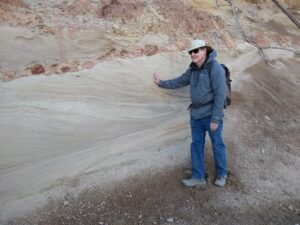 Dr. Jon Sandor, Ph.D., is a soil scientist who has studied ancient and traditional agriculture and soils in the American Southwest since the 1970s, and has also conducted similar research in Peru, Chile, and Mexico. He is also interested in knowledge of soils and agriculture among traditional farmers. He is an emeritus professor in the Agronomy Department at Iowa State University, where he was a teacher and researcher from 1983 to 2012, and is also a Certified Professional Soil Scientist (Soil Science Society of America). Jon now lives in New Mexico and continues soils research.
Dr. Jon Sandor, Ph.D., is a soil scientist who has studied ancient and traditional agriculture and soils in the American Southwest since the 1970s, and has also conducted similar research in Peru, Chile, and Mexico. He is also interested in knowledge of soils and agriculture among traditional farmers. He is an emeritus professor in the Agronomy Department at Iowa State University, where he was a teacher and researcher from 1983 to 2012, and is also a Certified Professional Soil Scientist (Soil Science Society of America). Jon now lives in New Mexico and continues soils research.
With colleagues and students he has conducted multidisciplinary research on ancient agriculture involving archaeology, anthropology, soil science, agronomy, ecology, and geomorphology. Main study areas in the Southwest have been at Mimbres, Zuni, and the middle and upper Gila River regions. He has collaborated on projects with Native American communities, such as with the Pueblo of Zuni and the Gila River Indian Community. He has also worked with archaeologists at Casas Grandes in Chihuahua, the Tularosa Basin, the Verde Valley, and Jemez region. He is currently documenting ancient and historical agricultural sites in the Rio Grande and Salinas Pueblos regions.
Myles Miller, MA has been professionally involved with the prehistory of the Jornada Mogollon and Trans-Pecos regions since returning to El Paso upon completion of graduate school in 1983. He first became interested in the region during elementary school while accompanying members of the El Paso Archaeological Society during trips to prehistoric sites and rock art locations across southern New Mexico and northern Chihuahua. For the past 40 years he has conducted research throughout the region and has participated in numerous excavations of prehistoric and historic Native American settlements in west Texas, southern New Mexico, and southeastern Arizona. His current research interests involve chronologies and dating methods, ceramic compositional analysis, and the relationships between social organization, ritual, placemaking on the landscape, and ceramic and rock art iconography in the Jornada region. He presently serves as a Principal Investigator with Versar (formerly Geo-Marine, Inc.) and supervises archaeological projects at Fort Bliss Military Reservation and for the Bureau of Land Management in southeastern New Mexico.
